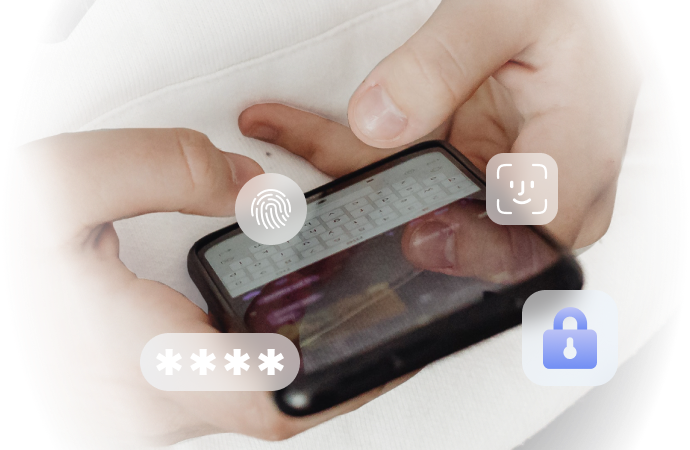
How To Change iPhone Screen Lock Time and Save Your Battery
Aug 27, 2025 • Filed to: Screen Lock Removal • Proven solutions
You might have noticed that your iPhone's screen will turn off and lock itself after you haven't used it for a while. By default, this happens after 30 seconds of inactivity.
But if you are here, you are probably wondering how to change iPhone screen lock time to make the screen stay on for longer. When you're using Maps for directions or reading a long article, for example, you’ll need to adjust the screen lock time to suit your needs.
Below, we will show you how to change lock screen time on iPhone, along with other information you’ll need to know.
Part 1. What Is Screen Time/Screen Time Out on iPhone or iPad?
When your iPhone screen locks itself after a period of inactivity, it will require either your passcode, fingerprint, or face to unlock it again. The screen time or screen time out on an iPhone or iPad is a setting that determines how long the device's screen stays on before it automatically locks itself.
This iPhone screen lock time actually serves multiple purposes. First, it helps maintain your device’s privacy and security by ensuring no one can access it without your permission. Moreover, the automatic screen lock functionality can prolong your iPhone’s battery health by minimizing unnecessary power consumption when the device is not in use.

Part 2. How Does Screen Timeout Affect Battery Life?
In case you are not aware, learning how to set screen timeout on iPhone and adjust it properly is a widely recommended practice to make your iPhone's battery last longer. When your screen stays on, it uses up battery power. So, if you wait a long time for it to lock, you will drain more battery.
On the other hand, if you set up the necessary iPhone screen timeout, you will get to:
- Prevents unnecessary power drain
If you forget to manually lock your device when you're not using it, the screen may remain on unintentionally and drain battery power. With a shorter screen timeout, the device automatically locks itself after a specified period of inactivity and prevents this kind of power drain.
- Optimizes standby time
Even when you're not actively using your device, the screen timeout setting influences how quickly the device enters standby mode. When the screen turns off promptly after a period of inactivity, the device conserves power by minimizing background processes and reducing power consumption.
That’s why you need to learn how to change screen lock time on an iPhone and select an appropriate screen timeout duration that balances battery conservation with usability. Opting for a timeout that is too short may also lead to frequent screen lockouts, which can be inconvenient if you're frequently using your device.

Part 3. How To Change Screen Lock Time on iPhone?
Moving on to the next question: how do I change the auto lock on iPhone? You can follow the following step-by-step guide to the auto lock settings on your iPhone. This guide works for all iPhones running the latest versions of iOS.
How to change auto lock in iPhone:
Step 1: Go to iPhone Settings > Display & Brightness > Auto lock.
Step 2: Choose the duration of inactivity before your iPhone screen locks. The options range from 30 Seconds, one to five minutes to Never. If you select Never, your screen will remain unlocked indefinitely unless manually turned off using the Side button.

But remember, if you choose “Never” in the iPhone auto lock setting, make sure to switch back to auto lock when you're done using it. Leaving it on Never can quickly drain your battery and potentially expose your iPhone to unauthorized access if someone else picks up your phone.
Another option is to set it to the longest time (five minutes) before it locks. This way, you won't have to unlock your phone as often, and it'll still save battery power.
Part 4. Bonus – How To Bypass iPhone Screen Lock in a Few Clicks
After learning how to adjust the auto lock on iPhone, you know that enabling an auto lock on your iPhone will require a passcode to unlock it. However, what happens if you forget your passcode to unlock your screen? This will prevent you from accessing your device.
One of the solutions to bypass this passcode is using Wondershare Dr.Fone - Screen Unlock (iOS) is a trusted software solution designed to help users regain access to their iPhones in scenarios where they've forgotten their screen time passcode or encountered other lock screen issues.
Follow these steps to unlock your iPhone without a passcode with Dr.Fone – Screen Unlock (iOS):
Step 1. Open Wondershare Dr.Fone after installing the software on your computer and connect your iPhone. Then, navigate to Toolbox > Screen Unlock > iOS.
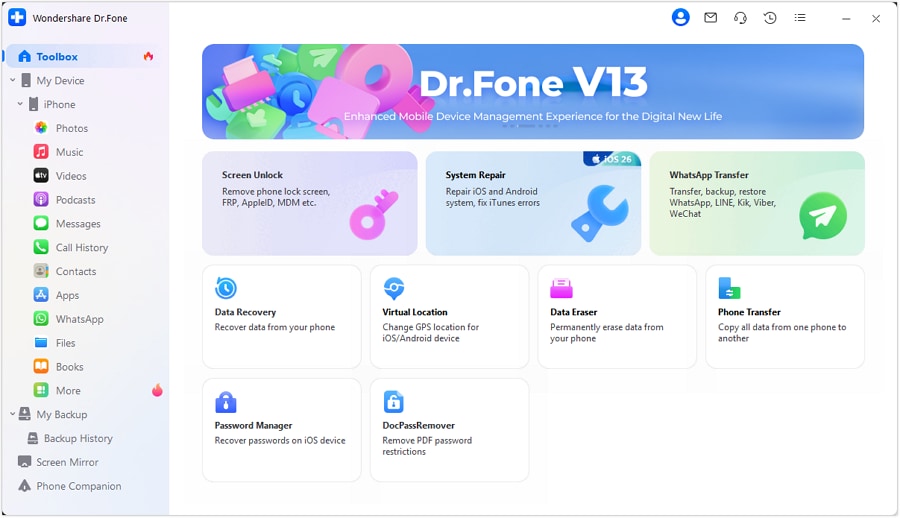
Step 2: Choose Unlock iOS Option
Select “Unlock iOS Screen” and click “Start” on the next window to proceed.
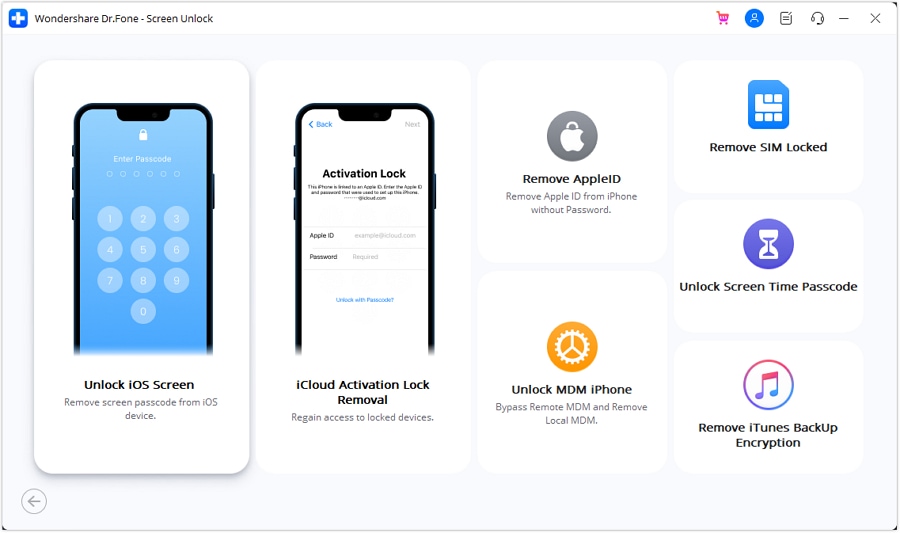
Step 3: Enter Recovery Mode
Follow the instructions provided by Dr.Fone to put your iOS device into Recovery Mode or DFU Mode, according to your device model.
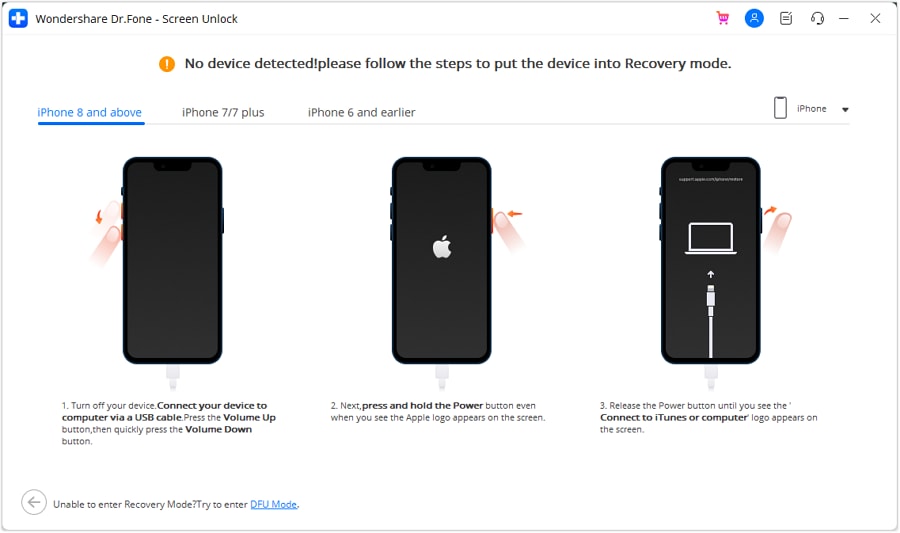
Step 4: Confirm Device Details
Dr.Fone will automatically detect your device model. You only need to confirm and adjust the model and system version if necessary. Then, click “Start” to unlock your iPhone's screen.
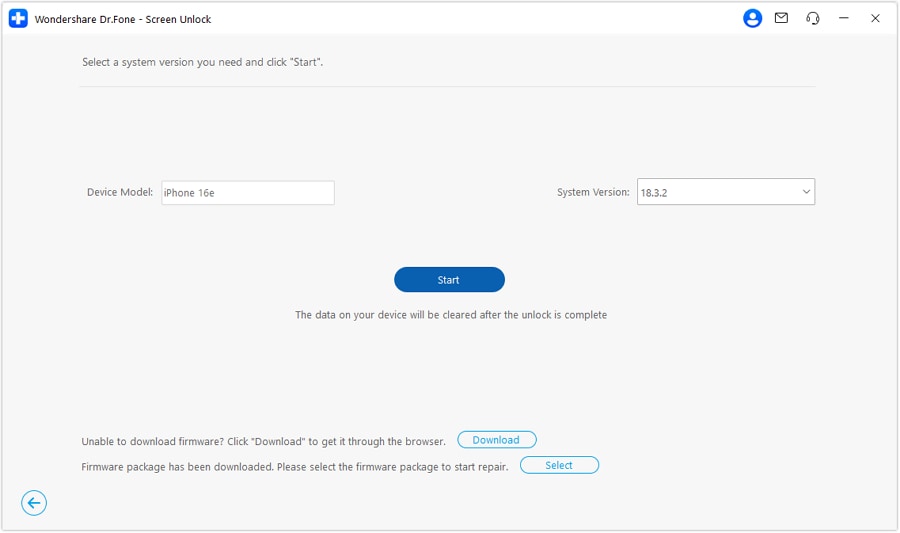
Step 5: Download iOS Firmware
Monitor the download progress of the iOS firmware. Once you’ve downloaded the firmware, click “Unlock Now” to continue.
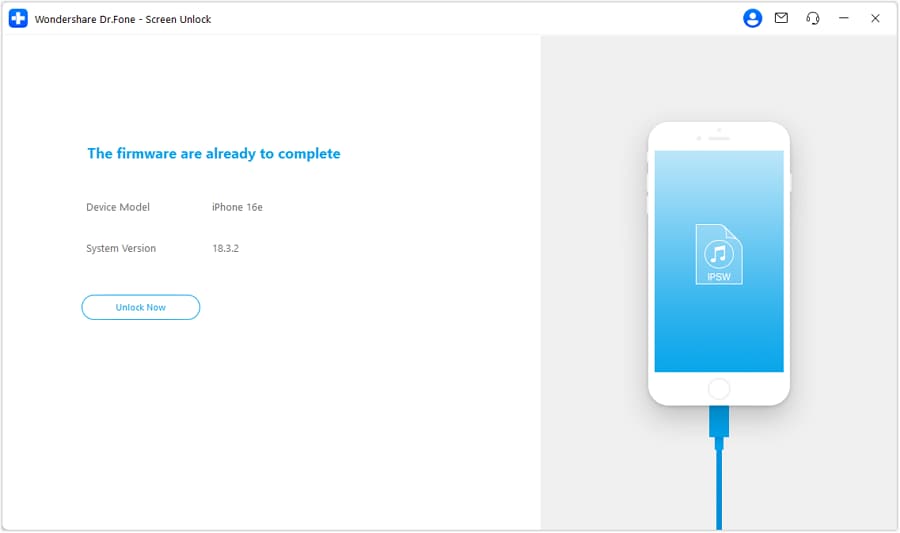
Step 6: Confirm Unlocking Process
Enter the code on the screen to confirm the unlocking process. Make sure your iPhone remains connected throughout the process to avoid any issues.
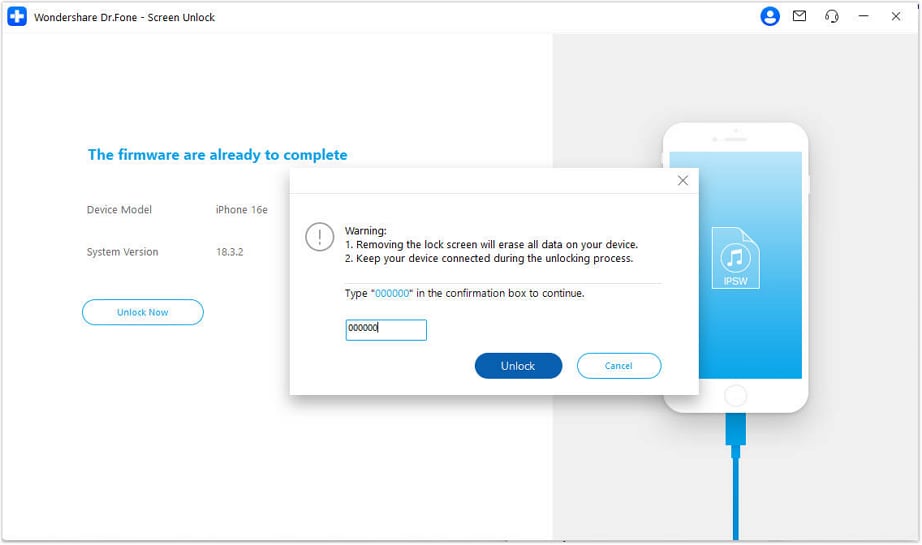
Once the unlocking process is complete, click “Done” to finish. If your iPhone remains locked, you can click Try Again to restart the process.
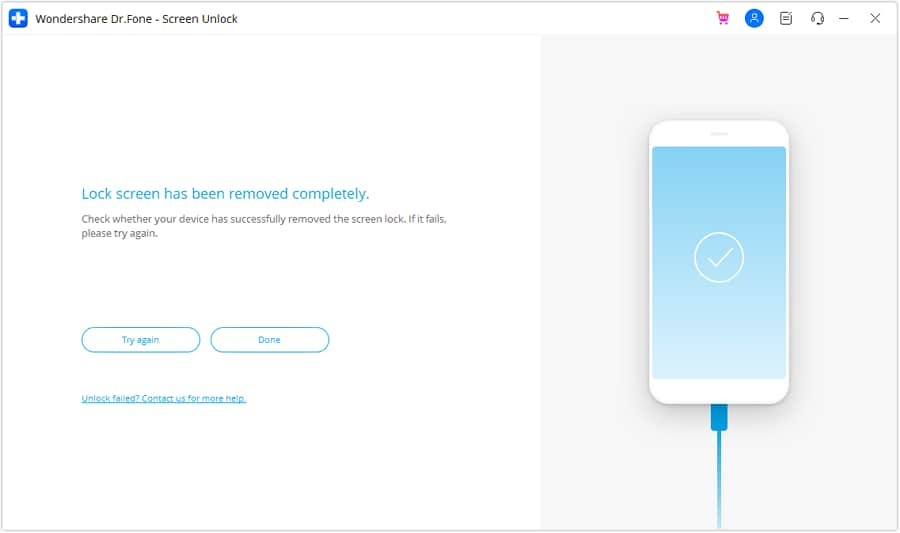
Conclusion
Once you figure out how to change the lock screen time on iPhone, you'll have more control over how you use your device. This small adjustment can help you manage your battery life better and enhance the security of your personal data.
Even if you forget the passcode to your iPhone lock screen, you can use the Dr.Fone - Screen Unlock (iOS) tool to bypass the lock screen safely. This can be a lifesaver if you find yourself locked out of your device unexpectedly.
FAQs
iPhone Unlock
- Access Locked iPhone
- 1. Reset Locked iPhone Without iTunes
- 2. Erase Locked iPhone
- 3. Get Into Locked iPhone
- 4. Factory Reset Locked iPhone
- 5. Reset Locked iPhone
- 6. iPhone Is Disabled
- 7. Fix iPhone Unavailable Issue
- 8. Forgot Locked Notes Password
- 9. Unlock Total Wireless Phone
- 10. Review of doctorSIM Unlock
- iPhone Lock Screen
- 1. Lock Apps on iPhone
- 2. Bypass iPhone Passcode
- 3. Unlock Disabled iPhone Without PC
- 4. Disable One More Minute Screen Time
- 5. Unlock iPhone Passcode Screen
- 6. Reset iPhone Password
- 7. Auto Lock Never on iPhone
- 8. Remove Carrier Lock/SIM Restrictions
- 9. Get iMei Number on Locked iPhone
- 10. Add a New Face ID
- 11. iPhone Passcode Expired Pop-Up
- 12. Control Display Rotation
- 13. Fix iPhone is Disabled Connect to iTunes
- 14. Fix Turn Passcode Off Greyed Out
- 15. Get iPhone out of Demo Mode
- 16. Unlock Unresponsive Screen
- 17. iPhone Ask for Passcode After Reset
- Remove iCloud Lock
- 1. Remove Activate Lock without Apple ID
- 2. Remove Activate Lock without Password
- 3. Unlock iCloud Locked iPhone
- 4. Crack iCloud-Locked iPhones to Sell
- 5. Jailbreak iCloud Locked iPhone
- 6. What To Do If You Bought A Locked iPhone?
- 7. Fix iPhone Unavailable No Erase Option
- 8. Find iCloud Email Address on Apple Device
- 9. Broque Ramdisk iCloud Bypass
- Unlock Apple ID
- 1. Remove Payment Method on iPhone
- 2. Create a New Apple ID Account
- 3. Change Apple ID on iPad
- 4. Change Your Apple ID Password
- 5. Apple ID Not Active
- 6. Fix Wrong Apple ID Issue on iPhone
- 7. Fix This Person Is Not Active
- 8. New iCloud Terms and Conditions
- 9. Fix Apple ID Account Unavailable
- 10.Find Apple ID by IMEI
- 11. Unlink 2 iPhones with the Same Apple ID
- 12. Reset Password at appleid.apple.com
- 13. App Store Keep Asking for Password
- 14. Find Apple ID Password No Reset
- 15. Trusted Devices List Not Available
- Remove SIM Lock
- 1. Unlock iPhone Using Unlock Chip
- 2. Unlock iPhone for Free
- 3. Unlock iPhone Online
- 4. Factory Unlock iPhone
- 5. SIM Unlock iPhone
- 6. Unlock AT&T iPhone
- 7. Unlock iPhone with IMEI Code
- 8. Unlock iPhone without SIM Card
- 9. Unlock Cricket iPhone
- 10. Unlock iPhone with/without SIM Card
- 11. Unlock T-Mobile iPhone
- 12. Unlock Verizon iPhone
- 13. iPhone IMEI Checker
- 14. Unlock Xfinity iPhone
- 15. Unlock iPhone From The Carrier
- 16. Turbo SIM iPhone
- 17. Get the Sprint Unlock Codes
- 18. Unlock a Sprint Phone
- 19. Fix When iPhone Says No Sim
- Unlock iPhone MDM
- 1. Remove MDM from iPhone
- 2. Remote Management on iPhone
- 3. MDM VS MAM
- 4. Top MDM Bypass Tools
- 5. IoT Device Management
- 6. Unified Endpoint Management
- 7. Enterprise Mobility Management
- 8. Top 10 Proxy Websites
- 9. Mosyle MDM Remove Tool
- Unlock Screen Time Passcode
- 1. Reset Screen Time Passcode
- 2. Turn Off Screen Time without Passcode
- 3. Screen Time Passcode Not Working
- 4. Disable Parental Controls
- 5. Bypass Screen Time on iPhone Without Password
- 6. Delete Screen Time History on iPhone
- 7. Turn Off Downtime on iPhone
- 8. Download Age Restricted Videos
- MDM Unblock Games/Websites
- 1. Basketball Stars Game Unblocked
- 2. Play Getaway Shootout Unblocked
- 3. Play Build Now GG Unblocked
- 4. BitLife Unblocked
- 5. 10 Best Unblocked Anime Websites
- 6. Best Unblocked Game Websites
- 7. 1v1 LOL Unblocked
- 8. Get Poly Track Unblocked
- 9. Music Websites Unblocked
- 10. Spotify Unblocked
- 11. Snow Rider 3D Unblocked
- Unlock Apple Watch
- Unlock iPod Touch
- ● Manage/transfer/recover data
- ● Unlock screen/activate/FRP lock
- ● Fix most iOS and Android issues
- Unlock Now Unlock Now Unlock Now















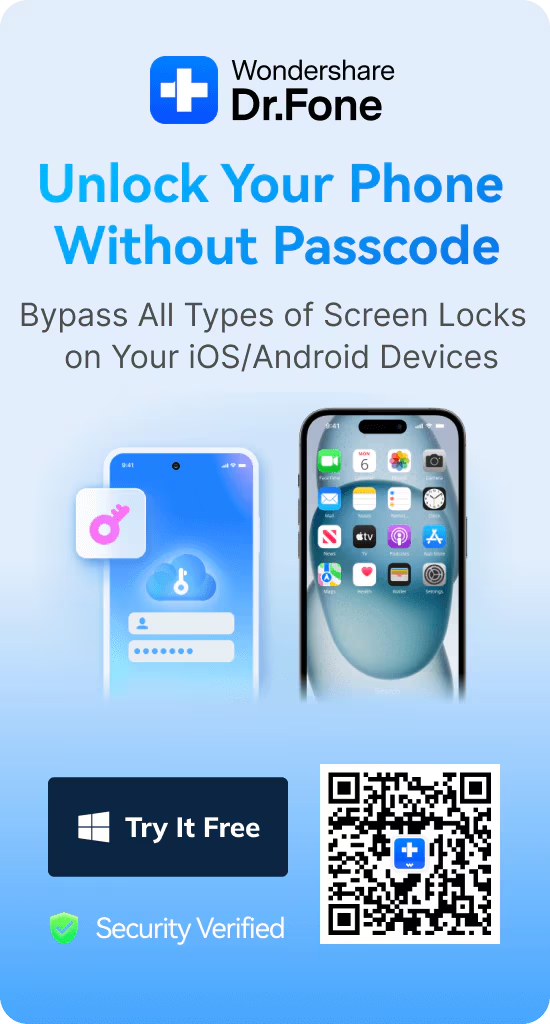

James Davis
staff Editor